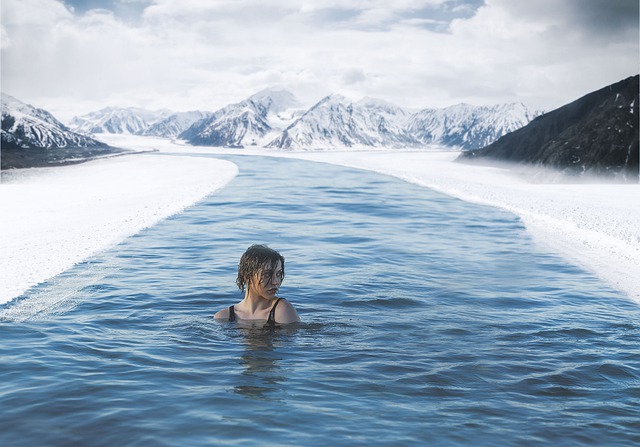If you’re reading this, I’m guessing you like the idea of a challenge, which means you’re already off to a great start! Fair warning: this challenge might take some persuasion; however, you’ll be proud you gave it go, and I think the effects and benefits you’ll experience from it will be worthwhile.
 So what’s the big deal about this challenge, you ask? Well, it has to do with getting cold. In fact, it’s called cold therapy. Some people call it cold exposure, cold immersion, or cold hydrotherapy. Cryotherapy is another name, but refers to a different process which will not be discussed in depth in this article. What will be the main focus here is how this thing called “cold therapy” boosts your mental health specifically (although the physical benefits are incredible, too!), different ways you can expose yourself to the cold, and the safer conditions to do so as a beginner.
So what’s the big deal about this challenge, you ask? Well, it has to do with getting cold. In fact, it’s called cold therapy. Some people call it cold exposure, cold immersion, or cold hydrotherapy. Cryotherapy is another name, but refers to a different process which will not be discussed in depth in this article. What will be the main focus here is how this thing called “cold therapy” boosts your mental health specifically (although the physical benefits are incredible, too!), different ways you can expose yourself to the cold, and the safer conditions to do so as a beginner.
Without further introduction, here’s why you should try the cold therapy challenge!
1. Increase in Stress Tolerance
You’ll often hear entrepreneurs, motivational speakers, and various leaders saying growth is a result of stepping out of your comfort zone, or getting comfortable with being uncomfortable. Many of us health professionals say the same mindset is necessary when starting new healthy habits, like exercising, eating healthily, or going to counseling. Cold exposure undoubtedly puts your body in a stressful environment, but going through tough situations results in a higher tolerance to stress. In the mental health world, this is similar to a component of Dialectic Behavioral Therapy (DBT) which is aimed at building mental resilience, coping with pain, managing emotions, and building confidence (among other things). Cold exposure is great training for the mind because it helps work on those same goals. By building your stress tolerance, mental flexibility, and resilience through cold therapy, you’ll notice those benefits following you into other areas of your life.
2. Increase in Energy, Mental Clarity, and Focus
Self-directed cold exposure causes a significant release of epinephrine (adrenaline) and norepinephrine in the brain and body. These neurochemicals are what make us feel alert and attentive. Norepinephrine, specifically, also helps decrease inflammation in the brain and body to strengthen our neuroplasticity. I’ll spare you the science behind this, but the term neuroplasticity is a fundamental piece of learning and improving memory. Who doesn’t want a better memory, more energy, and focus in their life?
 3. Increase in Mood
3. Increase in Mood
Cold water is not the cure for any mental health condition, but it was found that cold exposure can relieve depressive symptoms. One thought is that cold therapy helps reduce inflammation, which is a known mechanism of depression. Another thought is that when we take a dip into or take a walk through some means of coldness, our sympathetic nervous system is triggered to release hormones like norepinephrine and dopamine (both of which are in the family of feel-good chemicals), and they end up leaving us feeling more “up” and “awake.” Low norepinephrine activity is linked to several conditions, a couple of which are major depressive disorder, other mood disorders, and attention deficit disorders. While there’s still a great need for more research to be done specifically on how cold therapy can address mental health concerns, there is no doubt that the release of chemicals like norepinephrine and
dopamine improve our mood by enhancing our sense of well-being, pleasure, and goal- directed behaviors. I know what you’re thinking. Getting into cold water sounds completely absurd, but it’s actually, in turn, going to help me feel better and potentially happier? YES! It’s a wild paradox that’s hard to explain, but don’t knock it until you try it!
4. Boost in Quality of Sleep
There are a few theories as to why cold therapy can help improve sleep. First, body temperature plays a huge role in our sleep quality. Typically, when we’re drifting off, our body experiences a decrease in temperature and just before we wake up (as well as throughout the day) our body temperature rises. Cold showers and ice baths, over the long haul, help to regulate our internal temperature making this internal rhythm more consistent and efficient. Another theory is that cold showers are shown to reduce blood pressure, heart rate, and muscle tension – all of which, in turn, increase relaxation. Finding ways to relieve tension and stress almost always helps boost sleep quality!
5. Breathing through Tough Circumstances
So often we hear about yoga and meditation as the popular pioneers in the movement toward living healthier, physically and emotionally, because of their focus on breathing and controlling one’s breath. It builds mindfulness and connection between brain and body, and when practiced long enough, it carries into other areas of one’s life. Hard circumstances require that we return to our breath because it’s what keeps us calm and stable minded. Wim Hof, or “the Iceman” is an expert in the cold therapy world, and his methods are a great resource for beginners.
 Methods of Exposure
Methods of Exposure
1. Ice baths
2. Cold showers
3. Cryotherapy (Liquid Nitrogen Exposure)
4. Cold Weather Exposure
5. Face, Hands, and/or Feet Dip
Safety Tips
1. Start the cold water immersion on the “warmer” end.
2. The colder the stimulus, the shorter amount of time you need to expose yourself to the cold. Some people can go into cool waters (60°F) for a longer period of time (30-60 minutes), and some people like being in very cold waters (~40°F) for a shorter period time (20-60 seconds) to get it over with. Experiment slowly and find your happy medium.
3. Keep the timing of exposure brief (1-2 minutes) to start. You can work on prolonging your exposure to the cold, and dipping into colder temperatures, over time.
4. Never get into a dangerous body of water, especially unsupervised.
5. Do it with a buddy!
6. Remember that everyone hates it when they start, but sooner or later they come to love it.


